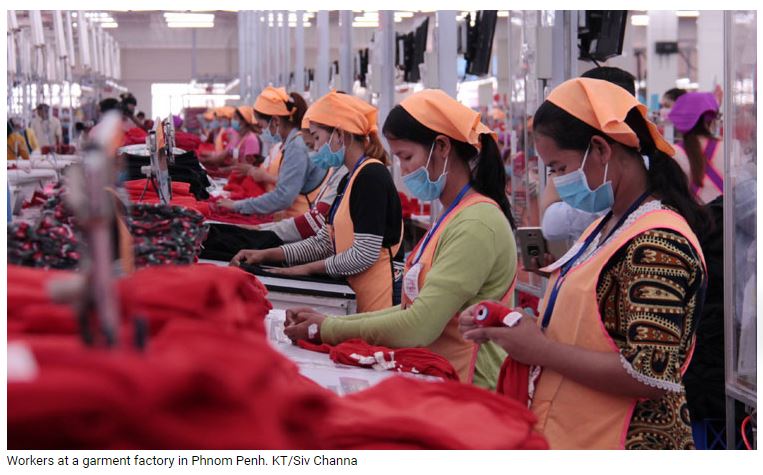Cambodia: Garment industry imports 25% more fabric in first nine months of 2021
Cambodia’s garment sector increased fabric imports by more than 25 percent to $3.5 billion in the first nine months of the year compared with the same period in 2020, according to the World Bank.
The rise was due to growing orders and rising exports of garments and travel products, said Kaing Monika, Deputy Secretary General of the Garment Manufacturers Association of Cambodia.
Travel product demand saw the highest growth at 30 percent, with a 15 percent increase in shipments of footwear and a 5 percent rise in clothing exports. Export growth in garments is relatively low due to competition from countries such as Vietnam and Bangladesh, Monika said.
Garment exports to the United States rose by nearly 32 percent to $3.4 billion in the first nine month of the year even though the US has not validated the Generalized System of Preferences with Cambodia. The GSP is a US trade program designed to promote economic growth in the developing world by providing preferential duty-free entry for up to 5,000 products.
Total garment exports rose 11.4 percent in the first nine months of the year, compared with the same period in 2020, to a total of $8.24 billion. Last year garment exports fell more than 10 percent to $7.42 billion, according to the Commerce Ministry.
The government has announced eight rounds of financial support to help the garment industry stay afloat during the Coronavirus pandemic. The industry is the biggest foreign currency earner for Cambodia with more than 1,100 factories employing around 750,000 mostly female workers, according to the Labour Ministry.
The garment industry is under pressure to increase digitization to improve efficiency and lower operating costs. The World Bank says the tech transformation should not just apply to machinery but to the workers.
“Cash wage payments are time-consuming and more expensive. Payroll staff and workers need to leave the production floor to collect their pay, which in Cambodia is twice a month,” the World Bank said. “Even when factoring in the costs of digitization-like setup expenses and transaction fees-we estimate that digital wage payments can save large factories at least $1,700 per month.”
The World Bank said Cambodian workers would have no problems being paid online since most of staff it interviewed had smart phones.
Source: https://www.khmertimeskh.com/50988548/garment-industry-imports-25-more-fabric-in-first-nine-months-of-2021/


 Thailand
Thailand




